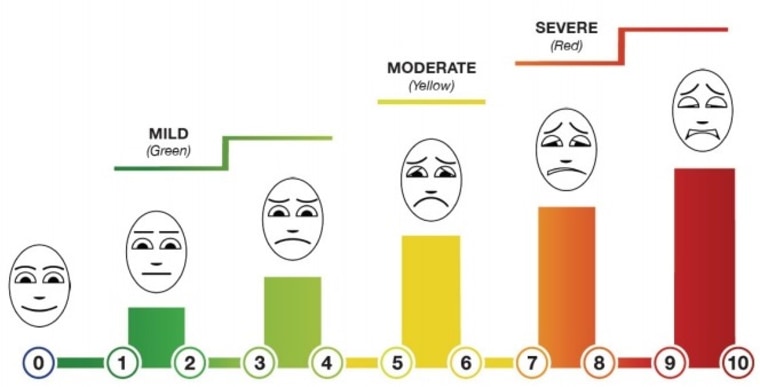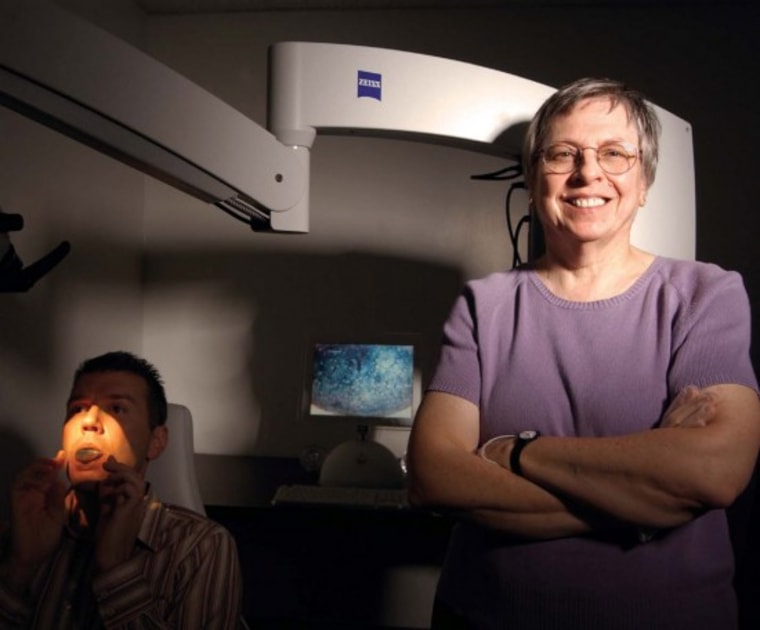
GAINESVILLE, Fla. — How bad does it hurt? The standard method for gauging pain looks for a 1-to-10 rating, but it turns out that one person's 3 may well be another person's 5. And that can make a difference for how the pain is treated.
University of Florida psychologist Linda Bartoshuk has a different idea: Try comparing your pain to the loudest sound you've heard, or the brightest light. Is it more like a telephone dial tone, or a train whistle? A night light, or sunlight?
"Do you really think that everybody has the same '10' on the scale?" Bartoshuk asked this week during a presentation at the ScienceWriters2013 conference in Gainesville.
How sensations rate
Over the years, Bartoshuk has focused on how to translate subjective sensations into objective data — not just for pain, but for taste as well. Starting in the 1990s, she documented how some people have tongues that are more densely packed with fungiform papillae, the little bumps that contain a person's taste buds. Those folks, dubbed "supertasters," appear to experience tastes more intensely than the rest of us.
Other factors can affect how people's taste buds work: During the Gainesville talk, Bartoshuk passed out little circles of filter paper treated with a chemical substance called 6-n-propylthiouracil, or PROP. Some people appear to be genetically suited to get a strong bitter taste from PROP, while others taste hardly a thing. (I'm in the latter category.)

When Bartoshuk asked supertasters to compare the sweetness of Coca-Cola to the loudness of a sound, the average supertaster went with a 90-decibel train whistle. In contrast, people who didn't have the super sense of taste compared the Coke to an 80-decibel telephone dial tone. A jump of 10 decibels translates into double the loudness; thus, there was a significant, predictable difference in how the two groups perceived taste.
"Supertasters live in a neon taste world, compared to the pastel taste worlds of others," Bartoshuk said.
Comparing men and women
That led her to wonder whether a similar technique could be applied to gauging pain. She drew up a scale that threw out the traditional "1-to-10," and went instead with a variety of cross-modal experiences — for example, the softness of a whisper, the brightness of full sunlight, or the strongest sensation of any kind ever experienced.
The experiment found that women tend to have a higher-ranging scale for pain than men do. A man might put a knee injury on the top of the scale, and compare it to the sun's brightness. In contrast, a woman might say the pain of childbirth was more intense than sunlight. Generally speaking, the male pain scale went from 1 to 10, while the female scale went to 12.
Bartoshuk says that suggests that a man's "4" might be equivalent to a woman's "3" when it comes to pain. Does that make a difference? It could: One emergency-room study found that when patients rated their pain as less than 4, they never received painkillers.
Over the past few years, Bartoshuk and other researchers have been debating whether it's worth tweaking pain measurement scales. Some experts say that the 1-to-10 scale seems to be working well enough, and there's no need to change. Others say that visual ways of gauging pain — for example, by pointing to a spot on a line — work better.
In July, U.S. and Australian researchers reported that the method Bartoshuk favors, known as the general Labeled Magnitude Scale, "has great potential and can be feasibly used to measure pain intensity clinically." They said the method is particularly valuable for rating pain that goes up to 10 and then gets even worse.
So how would you rate these methods for gauging pain and other sensations? On a scale of 1 to 10, of course.
More about the science of pain:
- Study shows pain really is all in your head
- How video games help manage pain
- Video: The science of pain
Alan Boyle is NBCNews.com's science editor as well as president of the Council for the Advancement of Science Writing. CASW and the National Association of Science Writers presented the ScienceWriters2013 conference in Gainesville, in cooperation with the University of Florida. Bartoshuk's talk was part of CASW's New Horizons in Science briefings.
Connect with the Cosmic Log community by "liking" the NBC News Science Facebook page, following @b0yle on Twitter and adding +Alan Boyle to your Google+ circles. To keep up with NBCNews.com's stories about science and space, sign up for the Tech & Science newsletter, delivered to your email in-box every weekday. You can also check out "The Case for Pluto," my book about the controversial dwarf planet and the search for new worlds.